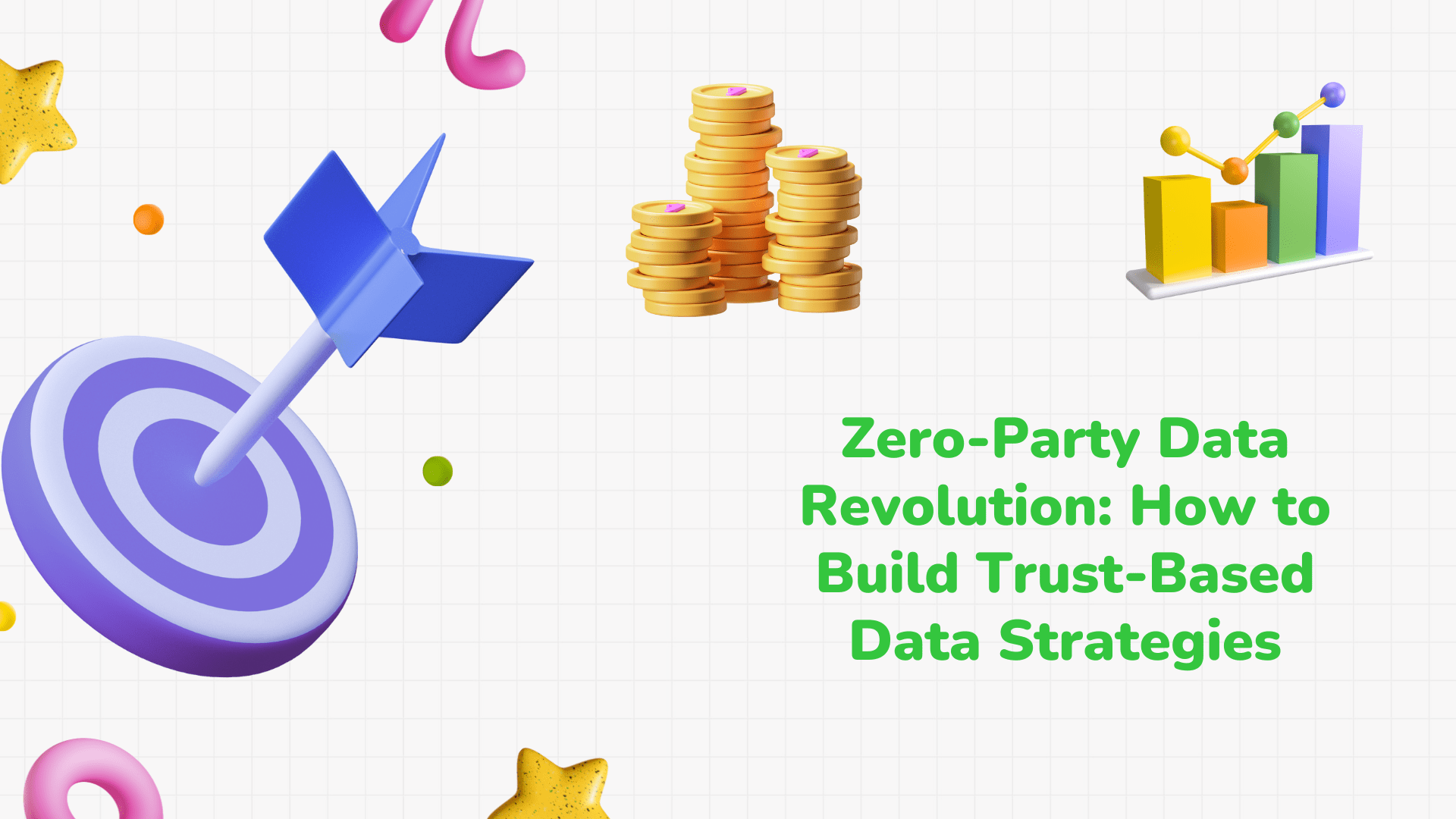
Introduction
In the evolving digital marketing ecosystem, consumer trust is the new currency. Traditional data collection methods are losing credibility, and the need for transparency has never been greater. Enter zero-party data—a consent-based, willingly shared form of customer information that opens the door to personalized, trustworthy marketing. As brands look for sustainable data strategies amidst rising privacy regulations and ad fatigue, zero-party data is not just a trend—it’s a revolution.
Why Zero-Party Data Matters Today
Rise of Consent-Based Marketing: In an era where consumer privacy is at the forefront, marketing strategies must be rooted in user consent. Zero-party data supports this shift by being willingly shared by users, eliminating the guesswork and ensuring compliance with privacy norms. Unlike traditional data collection methods that scrape or infer behaviors, zero-party data respects user boundaries and choices—giving brands a clear path to ethical engagement.
Personalization Demands: Modern consumers expect personalized, relevant experiences. From curated product recommendations to tailor-made content, personalization is no longer optional—it’s a competitive necessity. Zero-party data allows marketers to deliver hyper-personalized experiences without breaching privacy, enabling them to meet customer expectations while retaining authenticity and trust.
Regulatory Pressures (GDPR, CCPA): With the enforcement of data privacy laws like the General Data Protection Regulation (GDPR) and the California Consumer Privacy Act (CCPA), businesses face stringent rules on how they collect and use customer data. Zero-party data stands out as a regulatory-compliant strategy, as it’s provided proactively by the customer, offering a secure and audit-friendly alternative to third-party tracking and cookie-based profiling.
How to Collect Zero-Party Data
Website Personalization: Introduce preference centers and onboarding flows on your site that ask users about their interests, needs, and intent. For example, a clothing brand can let users select their preferred styles and sizes upon first visit, immediately tailoring their experience.
Email Preferences: Provide subscribers with control over the frequency and type of content they receive. Preference centers that allow users to choose topics, categories, and formats empower them and improve your email engagement metrics.
Interactive Forms & Quizzes: Engage users through fun and interactive content like product finders, personality quizzes, or needs assessments. Not only do these tools drive engagement, but they also gather valuable self-declared data that informs future personalization.
Loyalty Programs: Incentivize sharing by offering rewards for completing profiles, participating in surveys, or referring friends. Loyalty programs are a goldmine for zero-party data as users are more willing to share when there’s a perceived value in return.
Building Trust with Your Data Strategy
Transparent UX: Design your website and digital experiences to clearly communicate what data is being collected and why. Use plain language, avoid dark patterns, and provide easy access to privacy settings. Visual indicators like progress bars or locked icons also help reinforce security.
Honest Messaging: Use direct and empathetic copy to explain the benefits of sharing data. Phrases like “Help us help you” or “Tell us what you love so we can serve you better” build emotional connections. Avoid vague or misleading language that suggests hidden motives.
Opt-in Customization: Let users choose what they want to share and when. Avoid pre-checked boxes or mandatory fields in forms. Giving users control over their data reinforces respect and encourages deeper engagement. Over time, this fosters long-term trust and advocacy.
Top Threats of Mishandling Zero-Party Data (Trust & Authority Section)
Data Fatigue: Overwhelming users with constant data requests can lead to fatigue and disengagement. Asking for too much information upfront without justifying the value can result in drop-offs and decreased brand credibility. The solution? Ask with purpose, show immediate value, and avoid over-surveying.
Lack of Transparency: Consumers are increasingly cautious about how their data is used. If your brand fails to clearly communicate the purpose behind data collection, trust erodes quickly. Transparent policies, real-time notifications on usage, and visible data preferences help build confidence.
Poor Segmentation: Collecting zero-party data is only as good as your ability to segment and act on it meaningfully. Using generic messaging after gathering detailed preferences will frustrate users. Effective segmentation based on collected inputs ensures relevance and enhances user satisfaction.
Breach of Privacy Promises: Breaking the promise of data confidentiality—whether through misuse or security lapses—can have devastating consequences. It not only risks regulatory penalties but severely damages brand reputation. Always adhere to consent scopes and maintain robust data security protocols.
Conclusion: The Future Is Zero(Party)
In a digital world shaped by privacy regulations, ad fatigue, and personalization demands, Zero-Party Data has emerged as a game-changer—not just for marketers, but for customers who crave relevance and transparency. It’s not just another data strategy. It’s a mutual trust contract between brand and buyer, built on honesty, intention, and value exchange.
From e-commerce personalization to B2B email journeys, zero-party data drives deeper engagement and long-term loyalty. But with great data comes great responsibility—mishandling can destroy trust faster than it was built.


